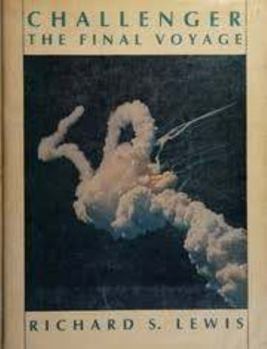Challenger: The Final Voyage
Select Format
Select Condition 
Book Overview
No Synopsis Available.
Format:Hardcover
Language:English
ISBN:023106490X
ISBN13:9780231064903
Release Date:January 1988
Publisher:Columbia University Press
Length:249 Pages
Weight:2.40 lbs.
Dimensions:0.8" x 8.7" x 11.2"
Customer Reviews
1 rating
"reality must take prec. over PR for nature can't be fooled"
Published by Thriftbooks.com User , 21 years ago
Challenger The Final Voyage by Richard Lewis is a must-read for anyone interested in the Challenger tragedy of January 1986. Upon writing this work, Lewis was a long-time writer and editor of scientific publications and had written several books on space exploration including "The Voyages of Columbia" in 1984. Lewis uses this expertise to write a very clear explanation on what happened to Challenger and the faulty decision making process that allowed the tragic event to take place. While the book is very technical, it is written in a way that even a reader such as myself who has no engineering background can follow along and understand. Many illustrations and photos are provided to further clarify very complex matters. The book starts with an eerie dialogue that went on between the Challenger crew and Houston right to the moment of the explosion. What follows is a look at what went wrong and, most importantly, what was known to be a weakness to the rocket booster structure years before the ill-fated launch. The most frustrating part of the Challenger story is that the cause of the shuttle's demise was not something out of the blue that puzzled the experts, but a concern that was voiced for years before and right up to the launch. That this tragedy could have easily been avoided is the saddest fact of all. Lewis' thorough account of the investigation following the accident demonstrates a fundamental debility in communication at NASA that, unfortunately, proved fatal again in the Columbia disaster. Lewis' book includes early concerns from Rockwell International (the orbiter's prime contractor) that an icicle may have damaged Challenger's heat shield causing the break-up and another voiced concern about insulation from the external tank hitting the heat absorbent tiles (pp. 30 & 134). The latter caused the Columbia tragedy 17 years later. One remarkable point that came out in an appendix to the Presidential Commission's report on the accident is the astronomical optimism gap between engineers and managers. Concerning the space shuttle program, engineers saw the probability for loss to be 1 in 100, for the managers this probability was 1 in 100,000 (pp. 212 & 215). I was in the sixth grade when the Challenger tragedy occurred. I remember my teacher explaining what had happened on the overhead projector. I had no idea what he was talking about. Perhaps he was planning on showing the lessons of Christa McAuliffe (who was to be the first teacher in space) to the class. Due to the dismissal of so many warning signs, McAuliffe was robbed of this experience (and, most horribly, her life) and millions of students were robbed of the chance to learn about space through her eyes. The Challenger tragedy touched the lives of people far beyond those directly involved and the family members. It can never be forgotten.






